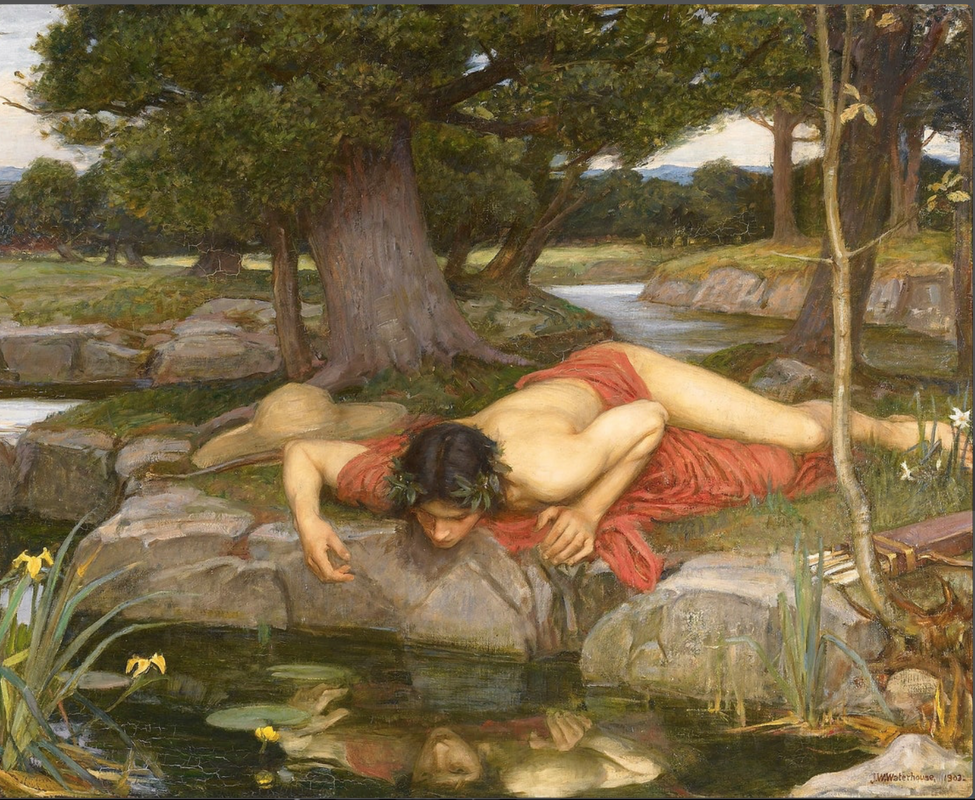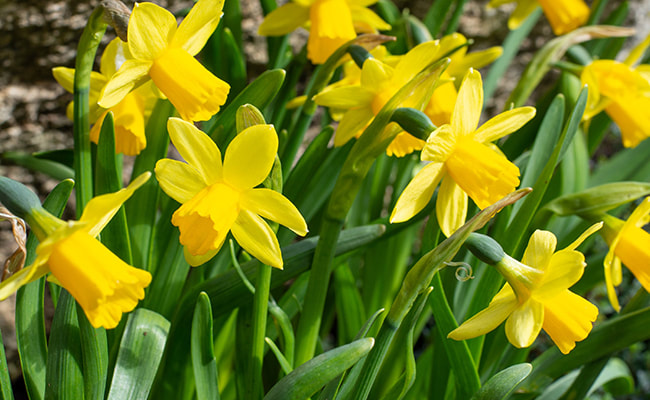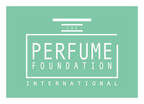|
By JAN KUSMIREK, IPF Chair UK, Essential Oils Expert, Aromacosmetologist, and Aromatherapist It surprises me how many Greek gods and goddesses have retained their provenance if nothing else than by name. The world of plant entomology throws up both common and botanical naming. Daphne, Artemis, Nerine, Adonis, Zephyr to name just a few, and then of course, Narcissus. Narcissus was a young and handsome hunter. You may recall a nymph called Echo who fell in love with him. Echo had been cursed by Hera, the wife of Zeus, because she had helped Zeus avoid being caught philandering with nymphs, as was his way. Echo chattered so much with Hera distracting her from realising that Zeus had gone on his way. Hera condemned Echo to silence, allowing her to speak and repeat only the last words spoken to her. Effectively, this curse killed any conversation. The only recourse Echo had to express her love to Narcissus was to follow him around and repeat the last word he said. Not much fun for either party. Narcissus was tired of her attention and always rejected any advances she made. Eventually she just faded away in despair and left only her voice which can sometimes be heard in certain places. Now some of Narcissus’ actions might be understandable but he was primarily in love with himself. He felt himself to be admirable in every way. Now Nemesis, the goddess of retribution, seeing what had befallen Echo and his unkind treatment of Echo, decided to punish Narcissus. She so placed him looking into a clear mirror-like pool where he saw himself reflected. He was in love with himself already, but this reflection was a hammer blow of infatuation. But once he saw that his reflection was unobtainable and so out of reach he went out of his mind. He lost his will to live and committed suicide. Two sad stories about the whims and vicissitudes of the pantheon of gods who behaved like humans. But how come the Daffodil was named for Narcissus? Some think it was so named because its flowers bend down or horizontal to admire themselves. Nice thought, but the Greek name is derived from the word “narkos” the route of our word “narcotic”. It can also mean numbness without feeling which perhaps was the emotion shown to Echo. Certainly, the smell of daffodils and jonquils are something else, heady, and floral perhaps addictive. Some varieties are more fragrant than others. The smell is opulent giving sensations of dark green leaves with traces of hyacinth, sandalwood, and jasmine, always the desire for more.
A macerated oil has been used to scent the body since ancient times and the perfume loved through time from Persia to Rome. Today a variety of extractions can be found including the now traditional absolute and from CO2. The ratio of fresh plant used for an absolute is 500kg to provide 300gm, so price is always a consideration. I have used Narcissus absolute from time to time and advise students to be aware of its intensity and that the adage “less is more” particularly applies, for I find it hypnotic with that indole molecule reaching out to me. The absolute is a green colour and not all like the resulting dilutions which provide the smell we associate with the flower. The fragrances claiming the narcissus notes are legion, but alas most will be using synthetic creations. Of those that I have had samples or have used includes Penhaligon’s Ostara with a heart of daffodil, hyacinth, cyclamen, and ylang-ylang released after the leaf, green topnote. It has that desired element. Tom Ford took this one step further with Jonquille de Nuit adding tonka to the narcissus heart leaving cyclamen to lead at the top to arrive at this heady hypnotic. Many others featuring narcissus have a more usual rose note associated at the heart. Possibly I think this is because the daffodil is seen as the Spring dressed in green, yellow, and white. Surely, this sings more of citrus and the freshness of the meadow than the greenwood. But that is the trouble with deception, and daffodil brings in the ideas surrounding the deep desires and self-centred addiction. Daffodil, due to its cost as an absolute, rarely finds its way to aromatherapy which concentrates upon the use of vegetable oils as a carrier or oral ingestion under medical supervision. This cheerful spring flower is indeed toxic. All parts of the daffodil are toxic. The part of the plant which is most toxic is the bulb and these are not edible, although some have mistaken them for onions! Eating any part of the plant can cause symptoms such as nausea, vomiting, abdominal pain, and diarrhoea. Two chemicals in daffodils make them poisonous to mammals. One called lycorine is found in the leaves, stem, and daffodil flower. The other more dangerous chemicals are a group called oxalates and these are in the bulb and are more likely to cause the most severe or dangerous effects. Now, who on earth would likely want to eat a daffodil? Children, but as the flowers can cause unpleasant mouth and throat irritation any ingestion is likely to be a salutatory lesson. It’s always a good idea, to though, to get ahead of what children do by issuing warnings. Note also, animals too can also do unexpected things like digging up bulbs to try and with not so good outcomes. Nature has always more than one side to its face. In the 1950’s Russian pharmacologists discovered that an alkaloid from narcissus, galanthamineIn, has possibilities in treating neurological disease. The The Society of the Chemical industry reports “Galanthamine, also called galantamine, marketed as Reminyl, is particularly interesting because it is approved by the National Institute for Health and Clinical Excellence in the UK as a treatment of early stage and moderate Alzheimer’s dementia.” Whilst we have dealt with all the warnings in folklore, in traditional medicine narcissus has still been used to treat whooping cough, colds, and asthma. People also take it to cause vomiting, an emetic. It has also been used externally, perhaps as a plaster or compress to treat wounds, burns, strains, joint pain, irritations and so on. This refers to its numbing or analgesic properties. In Homoeopathy like cures like so to speak so unsurprisingly, a tincture and dilution is used to treat all those ills described as toxic. I wonder what a tincture made with fragrant daffodil flowers would smell like. The solution is simply to try, and since this article was written at the beginning of April I finish as I make a trip to the garden to cut the last flowers and to try for an experimental tincture. With all this analysis of what materials can do it is easy to lose sight of what the daffodil really is. It is a joy, a beautiful flower with a scent that can take you to another space, merrily with dancing, a freshness that ends with a slow down just to gaze at beauty and contemplate the return of life. Ahh! Just breath the aroma in and enjoy.
2 Comments
By JAN KUSMIREK, IPF Chair UK, Essential Oils Expert, Aromacosmetologist, and Aromatherapist It was New Years Day, the Great Hall doorway bedecked in the red and green of Ivy, holly and red berry shadow the portent felt to come. The wind slithers its chill beneath the oaken door floating tiny snow flakes that sparkle before wetting the herb strewn floor turning to shining water droplets by the warmth of the blazing fire, the great Yule log. For fifteen days the feast of Christmas had been in play. The air is heavy and tainted by the smell of candle and reed light burning bright light to cheer and banish cold dark night away. The air smells of roast meats and foods, garlic and onion, of warm breads of dank clothing, sweat and dogs, mulled wine and spilled ale, crushed strewing herbs all souped to the feeling of conviviality and warmth. The harping is silenced by the sound of Horse and Rider coming closer. Conversation dampens and ceases with an uneasy sense of expectation as eyes turn toward the doors. The thud of heavy horse hooves sounds outside, loud and worrying. Jingle bell notes of steel accoutrements sound in rhythm to the thudding hooves. Chill fears creep to heart and stomach preluding the unexpected, the unknown. The knights reach for sword and dagger whilst the damsels and ladies cluster. Only Arthur the King remains undisturbed. The great doors swung open as though by a hidden force and in rides a great knight in full armour emblazoned green and his destrier painted green and the knight himself of green pallor. The stranger held a large and menacing axe in one hand but wore no breastplate, neck-guard or helmet or other battlement protections, and in his other hand he held a sprig of holly. Around his broad shoulder hangs a garland of ivy and holly with pines and evergreens woven fast. His presence distils a sharp note of freshness a cleansing feeling that pushes aside the redolent warmth and yet there is the smell of earth and fern of scented power without powder, so smelled Purdue the court perfumer laying back at table scenting the air like the war hounds by Arthurs great chair. Now was this scented giant from the Fougère or Woody family? Purdue began to sniff but surely Aromatic? Surely a hint of hay from the now pawing steed, oakmoss and musk are strong yet the first notes were floral like but no lavender or clary sage like the great Fougère Royal he foresaw to come. Whilst some elements were there it was the Woody facet that shone through with pine absolute and cypress and fir balsam the epitome, when skilfully blended, of exhilarating winter. Ah he felt the touch of vine and cypress that tall dark harbinger of shade and shadows to another place and the woods of the forest sharp and dark. Could that be the intense cologne of that London persona Jo Malone simply called Cypress and Grapevine. Then he had it! Something yet beyond cypress, it was simply a top aromatic note overlaying the woods and greens, fresh and spicy an element there for sure of Christmas citrus, more sharp than orange. All held in the embrace of musk and warming spices and the leaves which doth wilt in the warmth of the great hall. What else could it be, he mused, but the great Chanel Allure in its Extreme Sports perception, yet at that time still to come. The Knight roared a challenge. “I am not here for idle chatter. I have come in search of the bravest knight of the land, for this Round Table, I heard, is where one can find the most valiant of the land. By this holly berry branch of red and green you must know that I come in peace. I challenge that knight to strike the first blow with my axe. Know only that if I survive the first blow, I may return a stroke in kind one year and a day from now." Gawaine the nephew of the king and Champion stood forward. With one fell stroke, Gawain's axe clove through the stranger's s neck, the head falling to the herb strewn stone paviours, to be sure, yet the body of the Green Knight remained firm, as sturdy as if the head were still there. The body strode over to claim it’s head; and holding it by the hair with one hand, the body grabbed hold of the horse's reins. Stepping in the stirrup, the body strode aloft and the head, still dangling, turned to Gawaine, raised one eyebrow and its mouth said, "Gawaine, in one year and one day, find me at the Green Chapel. I am known as the Knight of the Green Chapel.” This Christmas tale of course is drawn from The Arthurian cycle best exemplified by the medieval literature entitled ‘the Matter of Britain’ and the troubadour Chrétien de Troyes. In essence it is the enactment of the death of winter that comes each year. In English tradition Holly King and Oak King fight it out at each of the solstices. The previously mentioned cypress was, along with vetiver, my introduction to the pungent smells of aromatherapy. I love those two smells. Cypress has a fresh, clean aroma that is herbaceous, spicy, with a slightly woody evergreen coniferous scent. The uplifting aroma has a very soothing emotional quality that provides comfort during times of grief and sadness. Cypress trees are often found planted near burial grounds. I feel it to be fresh, lingering, pine-like, resinous, slightly smoky with a sweet, balsamic undertone. The scent is very evocative of a forest setting, bestowing a soothing and refreshing ambience. In aromatherapy according to Valerie Worwood in her book the Fragrant Mind, the personality of Cypress is characterised by wisdom, strength, and uprightness like the tree. In practice, cypress is most often associated with upper respiratory issues. A less well-known property of cypress essential oil is the ability to stem bleeding, promoting blood clotting so having haemostatic and astringent qualities. The astringent properties allow cypress oil to tighten tissues, strengthening hair follicles and making them less likely to fall out! The haemostatic properties in cypress oil reduce the flow of blood and promote clotting where needed. These two beneficial qualities work together to promote healing for wounds, cuts and open sores quickly. As with Jo Malone’s Cypress & Grapevine this cypress note features strongly in Gucci’s’ Winter Melody Scented Water and others seeking to achieve the smell of this season. As with our folk romance hero, the green knight, it is the gloss green colour of the season that draws us to the base of the accords where ‘spikiness’ gives way to the sense of repose and renewal such as the surprising rose used by Gucci. Any therapeutic benefit must lie within the genuine essential oil or absolute and certainly that fleeting sense of coniferous reality will only come from natural materials. Red and green together be seen |
AuthorsAuthors are gardening and essential oils experts in a variety of categories including distillation, plants healing and cleansing properties. Archives
May 2023
Categories
All
|
- Home
- Introduction
- Choose your Plan
-
Choose your Plants
- Alecost
- Anchusa
- Angelica
- Balkan Sage
- Balm
- Basil Sweet & Bush
- Bergamot
- Borage
- Calaminth
- Camphor Plant
- Caraway
- Catmint
- Chamomile
- Chervil
- Chives
- Clary
- Comfrey
- Coriander
- Dill
- Elecampane
- Fennel
- Fennel Florence
- Feverfew
- Garlic
- Germander
- Giant Catmint
- Herb Patience
- Horehound
- Hyssop
- Lad's Love
- Lady's Maid
- Lavender
- Lily of the Valley
- Lovage
- Lungwort
- Mace
- Mallow
- Marigold
- Marjoram
- Melilot
- Mints
- Old Lady
- Parsley
- Pennyroyal
- Rose
- Rosemary
- Rue
- Sage
- Salvia Virgata Nemorosa
- Santolina Chamaecyparissus
- Savory
- Sorrel
- Sweet Cicely
- Tansy
- Tarragon
- Thyme
- Vervain
- Woad
- Wormwood
- Workshops
- Q & A
- Blog
- Contact
- Home
- Introduction
- Choose your Plan
-
Choose your Plants
- Alecost
- Anchusa
- Angelica
- Balkan Sage
- Balm
- Basil Sweet & Bush
- Bergamot
- Borage
- Calaminth
- Camphor Plant
- Caraway
- Catmint
- Chamomile
- Chervil
- Chives
- Clary
- Comfrey
- Coriander
- Dill
- Elecampane
- Fennel
- Fennel Florence
- Feverfew
- Garlic
- Germander
- Giant Catmint
- Herb Patience
- Horehound
- Hyssop
- Lad's Love
- Lady's Maid
- Lavender
- Lily of the Valley
- Lovage
- Lungwort
- Mace
- Mallow
- Marigold
- Marjoram
- Melilot
- Mints
- Old Lady
- Parsley
- Pennyroyal
- Rose
- Rosemary
- Rue
- Sage
- Salvia Virgata Nemorosa
- Santolina Chamaecyparissus
- Savory
- Sorrel
- Sweet Cicely
- Tansy
- Tarragon
- Thyme
- Vervain
- Woad
- Wormwood
- Workshops
- Q & A
- Blog
- Contact



 RSS Feed
RSS Feed

